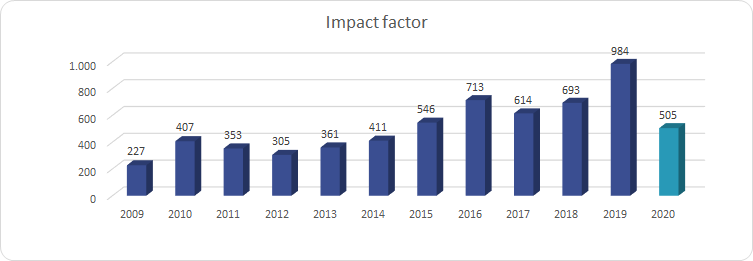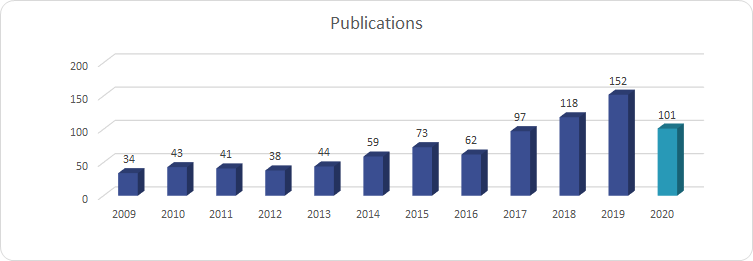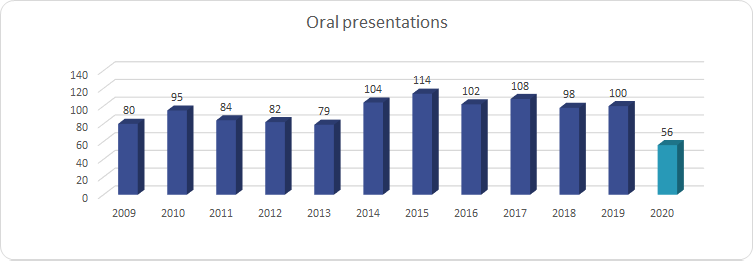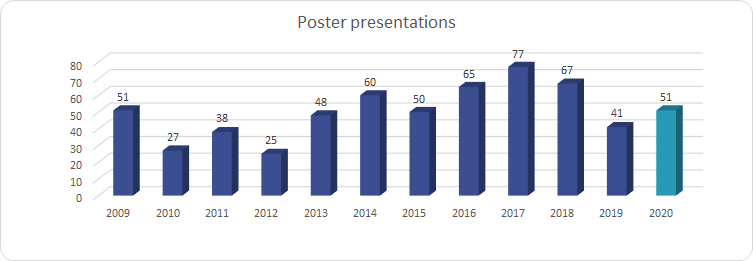The Scientific Activity Reports

As the new chairman of the Scientific Council of our society, it is a first-time privilege for me to highlight the scientific productivity of the EBMT.
The COVID-19 pandemic during 2020 was, in many aspects of our lives, startling and draining. Requiring us to make all kinds of changes and adjustments not only our private life, but also the way we care for our patients. Overall, our entire scientific community had to face new and unexpected challenges. This is reflected in our scientific activities as well as in the number of registered patients. By the end of 2020, the entire Registry included at least 740,000 transplant registrations whereas new registrations dropped by 10% during 2020. Publications, oral and poster presentations also showed a downslope compared to previous years. A probable reason for this is again the impact of COVID-19.
This new and demanding situation taught me how strong and impressive our community really is. The EBMT staff demonstrated, once again, that we have indeed a highly efficient administration capable of enormous efforts such as transitioning the established scientific structures and networking opportunities into the virtual world. The year 2020 altogether hosted 9 international educational and scientific events, including but not limited to the International Transplant Course, the International Nurses Study Day and the Midterm Focus Meeting on Non-Malignant Diseases, all in a virtual format and all with an unexpectedly high attendance helping create vibrant and stimulating discussions.
Yet, not all news about COVID is bad. This new challenge has urged the need for change that was probably overdue. The new e-learning opportunities that were implemented throughout the year are increasingly acknowledged as a fantastic educational tool conveniently available from your office or living room. This harmonisation of access to knowledge, independent of your financial background and access to travel options, will boost the quality of transplantation and education to a greater audience and, in particular, among younger colleagues.
With the emergence of an uncountable number of novel molecular agents, a diversity of cellular therapies (including CART cells) and new powerful tools for gene editing, the scientific community has finally made the dream of gene therapy a clinically applicable option for diseases where a practical cure was far beyond reach. This was all incorporated in a complex therapeutic interplay with the focus being on providing the best, most innovative and safest cure for complex diseases was one of the major strengths of our society during 2020. This year’s annual survey on hematopoietic cell therapy includes a summary of the EBMT’s activities over the last 30 years. It impressively demonstrates that the transplant approach not only continues to grow rapidly but is increasingly available in low-to-middle-income countries. This aspect of outreach makes me very happy since it assures that curative treatment options become available in countries where they are needed most.
In the sections below, the EBMT Working Parties present their impressive scientific achievements from the last 12 months spanning from, COVID-19 guidelines and to novel treatment modalities in CART cells. Both of which will definitely facilitate and impact our daily practices. Looking to the future, the pivotal challenges of the upcoming years will be working to transition our main asset, the EBMT registry, onto a new platform that will provide us a more efficient, modern and powerful tool.
To reflect and realise that I am part of this dynamic, scientifically open-minded and pleasant-natured community makes me feel proud and very rewarded. The EBMT is the optimal organisation to develop all these great ideas and make them a reality. It is our duty but also our pleasure to convey this spirit of hard work and dedication for future generations.




